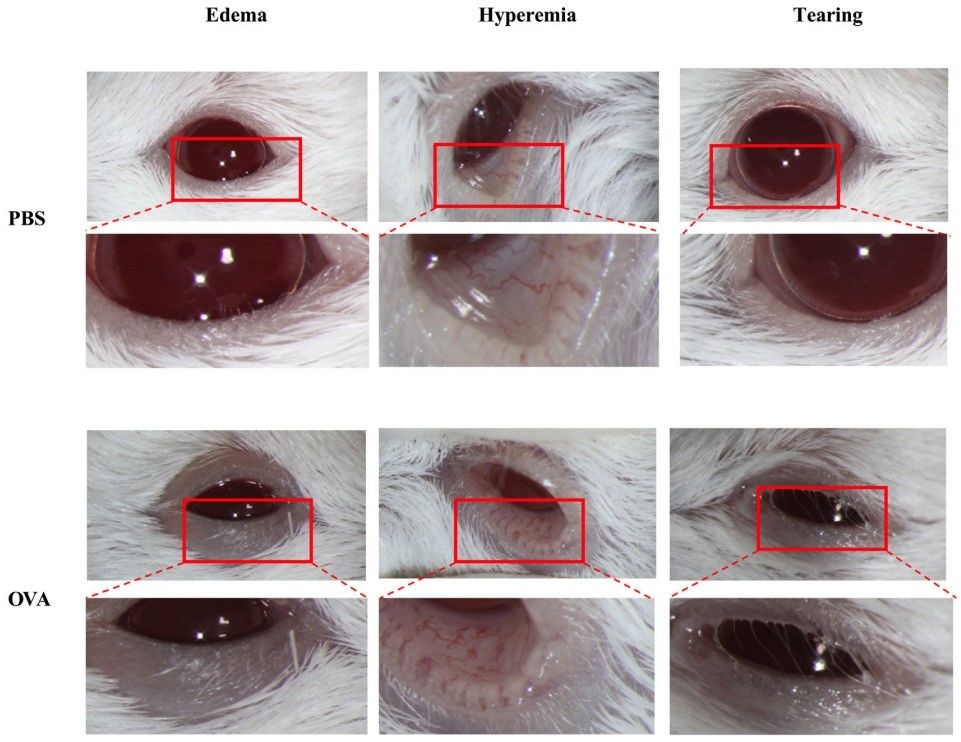Allergic Conjunctivitis Modeling & Pharmacodynamics Service
Allergic conjunctivitis (AC) is one of the most common immune-mediated diseases of the eye. Ocular itching and nasal symptoms can adversely affect the quality of life of patients. Additionally, the prevalence and incidence of AC have been rapidly increasing during the past 30 years which affect approximately 25% of the general population. With extensive experience in rodent ocular disease model, Creative Biolabs can provide allergic conjunctivitis model for our global customers to investigate the mechanism of allergic conjunctivitis and evaluate the efficacy of anti-allergic drugs.
Allergic Conjunctivitis Model
In the past years, a series of animal models of ocular allergies, known as allergies conjunctivitis model, have been developed to establish new therapeutic approaches and assess immunological mechanisms. The allergic ocular diseases have numerous different forms, including seasonal and perennial allergic conjunctivitis, vernal and atopic keratoconjunctivitis and giant papillary conjunctivitis. And each form of allergic ocular diseases has different pathophysiological and immunological components. In contrast to these distinct entities, the current animal models are based on the sensitization against a small number of allergens.
 Fig. 1 Construction of mouse model of allergic conjunctivitis (AC).1
Fig. 1 Construction of mouse model of allergic conjunctivitis (AC).1
Establishment of Allergic Conjunctivitis Model
Allergic conjunctivitis models are generated by subconjunctival injections or topical instillation a variety of antigens, such as house dust mite, ovalbumin, ragweed pollen or major cat allergens and consecutive challenge. So far, mainly three different laboratory animal species have been used for the establishment of animal models of ocular allergy, including guinea-pig, rats, and mice. And mice are the presently preferred species for models of ocular allergy.
Our Capabilities
With abundant experience, Creative Biolabs can provide both early phase and late phase allergic conjunctivitis model for our worldwide clients. Our professional scientists enable us to create models by different antigens. Most importantly, we have a series of qualitative and quantitative methods to evaluate the allergic response induced by antigen and the efficacy of anti-allergic drugs, which include but not limited to:
- McDonald-Shadduck scoring system
- Slip Lamp ocular examination: clinical evaluation
- Spectrophotometry: extravasation of a dye in eyelids/eyeball or in aqueous humor/iris ciliary body
- HRTII, histology: cellular infiltration
- Mediator concentration (including prostaglandin, leukotriene, interleukin)
In addition, Creative Biolabs offers other related rodent ocular disease models that you might interest in.
- Corneal Neovascularization Model
- Choroidal Neovascularization Model
- LPS-induced Uveitis Model
- Model of Retinal Degeneration & Neuroprotection
- Glaucoma Models
- Dry Eye Model
- Corneal Wound Healing Model
- Diabetic Macular Edema Model
- Infectious Keratitis Model
Creative Biolabs is happy to be your good partner with every step in preclinical development. To meet every customer's requirements, we also provide customized service for worldwide clients. If you are interested in the service we provide, please feel free to contact us for an inquiry and more detail information.
Reference
- Bao, Jiayu, et al. "Gp130 Promotes Inflammation via the STAT3/JAK2 Pathway in Allergic Conjunctivitis." Investigative Ophthalmology & Visual Science 64.4 (2023): 5-5. doi:10.1167/iovs.64.4.5. Distributed under Open Access license CC BY 4.0. The image was modified by extracting and using the B part of the original image.
For Research Use Only.
